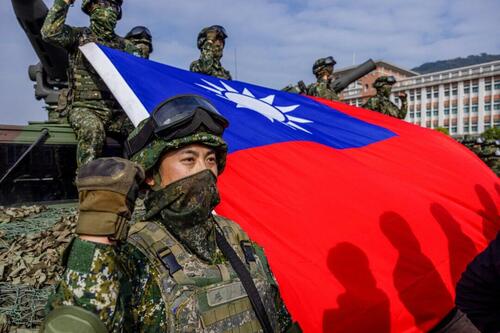
by A.F., Survival Blog:
(Continued from Part 1.)
Back to the Friday morning of the storm: The rain stopped here around 10 A.M.. According to our rain gauge, we received 5.6” overnight. As I walked our property, I found a tangle of trees had fallen with a very large white oak knocking over a decent-sized pine, and that in turn landed on one of our chicken coops. A sycamore had fallen from our side of the property line and damaged a section of our neighbor’s pasture fence, the top of a white oak had broken out and blocked one of our internal roads, a poplar was laying across our spring cistern, the road our driveway connects to was blocked by multiple trees in both directions, several hundred feet of utility lines were on the ground near our home and the creek that forms our property line was backed up by a nearby river such that the lowest elevations of our property were under five or so feet of water. We were fortunate.
TRUTH LIVES on at https://sgtreport.tv/
As of this writing, the only loss we incurred was a two-inch irrigation pump that spent the night underwater. I may be able to repair it. Our neighbor had a young bull (around 500 pounds) escape and no one has seen it in three weeks. Remarkably, none of the homes in our community suffered damage beyond a few torn-off shingles. There were/are so many downed trees here and in the surrounding counties. Obviously, some homes took damage; but the number of occurrences where a tree fell away from a house, vehicle or property even falling opposite to surrounding trees gave a strong testimony that the Lord was watching over His people during the storm. At my in-law’s place, twenty-six oak and hickory trees were uprooted on their two acres. The way trees fell between my father-in-law’s parked trucks, tractors, and trailers without scratching the paint cannot be described as anything other than divine intervention.
When we experience a power outage, I have a four-hour rule for bringing out the generator in hot weather but will wait for up to six hours in cooler weather. In the case of Helene, I hauled our gasoline-powered 5.6kW up to the house and connected it to the generator transfer panel around ten Friday morning. We have had this old workhorse since the summer of 2003, it has around 350 hours on it and I do my best to crank it every six months. I began running the carburetor dry to shut the engine off on the day I purchased it and since ethanol-free gasoline became available around here four years ago, Sta-Bil treated alcohol-free gas is all that I have used. The last of my 2022-dated stored fuel was burned during our time without electricity.
I installed the 60A/220VAC generator panel as the second improvement we made to our home after purchase. It is a twelve-space model produced by Siemens, but seems to no longer be in production. The panel is extremely simple with a pair of double pole 60 amp breakers mounted back to back with a lockout device that will allow both the generator and utility supplies to be shut off, but will only allow one or the other to be in the supply or on position (photo of generator panel). The remainder of the setup consists of a 6/3 copper conductor running between the generator supply breaker and a 50-amp 220-volt receptacle mounted in a weatherproof box on the exterior wall of our home. To tie in the generator, we use a 30-amp rated 10/3 copper cord between the 50A receptacle and the 220-volt output on the generator. If or when we up-size our generator, the 50-amp plug and 60-amp breaker will mean that I won’t have to resize any of the wiring to accommodate the larger gen set.
I become angry every time someone tells me they plan to connect a generator to their home by backfeeding a 220 circuit such as the dryer or range. For years I heard this method referred to as using a “suicide cord”, but during a generator safety course the instructor named it the man slaughter cord. I must agree this is a far more fitting name. The lineman son of a friend was severely injured a few years ago because someone back-fed a generator. Please don’t do this. A basic generator lockout panel is not an expensive investment and doing electrical work correctly in this situation above many others is a civic responsibility.
I had to get into the panel twice during the power outage. The first time was because I had inadvertently placed our home office on a breaker instead of the living room. Having included spare jumper conductors in the conduit during initial installation and purchasing extra breakers made adding the living room a three-minute fix. The second time I had to get into the panel was around day four and I will address the reason in a few.
Back in 2020, a friend hired me to install a generator panel similar to my own. In choosing his generator, he had found a company that took dual fuel Champion generators and added a regulator and fuel line modification that enables the unit to also run on natural gas. I was impressed enough with his generator that I purchased one. Since the Champion literature was not written for natural gas operation, I can only estimate that given the running outputs of 7,000 watts for gasoline and 6,300 W for propane that I am getting approximately 5,500 running watts due to the lower BTU density of natural gas. Although we have owned this unit for four years, I had not quite gotten through the initial five-hour break in period before needing the unit for Helene.
Originally Posted at https://www.sgtreport.com



